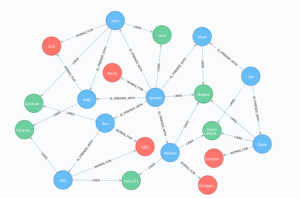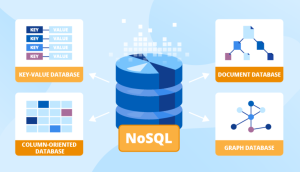Category Archives: NoSQL
MongoDB – Commands to Check the Status of MongoDB Database
This article represents different commands which can be used to check the status of MongoDB database on Linux/Ubuntu. Please feel free to comment/suggest if I missed to mention one or more important points. Also, sorry for the typos. MongoDB Status Check Commands The following represents some of the commands that can be used to check the status of MongoDB database. Note that mongod represents the daemon process of MongDB databass and, primarily, used to manage database access. It is recommended to check the log file (/var/log/mongo/mongo.log) to get details. Following are some of the commands which can be used to get the status of Mongodb: service mongod status: Displays the status …
NoSQL Data Models Types: Concepts & Examples

Not every data set fits neatly into a traditional SQL relational database. To address the need for more flexible databases, NoSQL data models were developed. These models allow for faster development cycles, larger data sets and greater scalability than traditional SQL databases. In this post, we’ll provide an overview of NoSQL data models and some examples of how they are used in real-world applications. NoSQL Data Model Types NoSQL data models can be divided into four main types: document stores, key-value stores, graph databases, and column stores. Each type has its own unique strengths and weaknesses and is best suited to certain types of applications or use cases. Here’s a …
NoSQL Databases List & Examples

With the proliferation of big data, there has been a corresponding increase in the number of NoSQL databases. For those who are new to the term, NoSQL databases are non-relational databases that are designed to handle large amounts of data. In this blog post, we will take a look at some of the most popular NoSQL databases. NoSQL databases are a newer alternative to traditional relational databases that are designed to provide more flexibility and scalability. NoSQL databases are often used for big data applications that require real-time analysis or for applications that need to be able to handle a large amount of concurrent users. While NoSQL databases can offer …
MongoDB Commands Cheat Sheet for Beginners

In this post, you will learn about MongoDB commands which could get you started and perform minimum database related activities such as create, update, drop a collection (table). These commands are ideally meant for MongoDB beginners and could be taken as the cheat sheet. You may want to bookmark this page for quick reference. MongoDB Commands Cheatsheet The following is the list of the commands: Start and stop the MongoDB Database Access the MongoDB database using Shell Show all databases Create a database, say, testdb; Switch to the database Until a collection is created in a database, the database name is not listed as a result of execution of the command, “show dbs” Add a …
MongoDB – Commands to Check MongoDB Performance on Linux
This blog represents code samples to check the MongoDB performance settings on Linux. Following configuration settings need to be checked: Filesystem as XFS Ulimit values Transparent huge pages Read ahead limit value File access time value TCP keepalive value Check Filesystem MongoDB recommends to use filesystem of type XFS when using WiredTiger as storage engine with MongoDB running on Linux. The details can be found on this page, MongoDB on Linux. Execute following command to check the filesystem: The output would look like following: Check ulimit values Check MongoDB recommended values for ulimit for number of open files and number of processes/threads allowed for the user access. The details can …
MongoDB – How to Add Arbiter to Replica Set
This blog represents the instructions on how to add arbiter to existing Mongodb replica set. Arbiters are MongoDB instances whose primary role is to participate in replica set election in order to break ties and select PRIMARY.This instance do not hold any data and have minimal resource requirements. As a matter of fact, it does not need or require a dedicated hardware to run. However, it is advised to run arbiter on different server than the replica set. It can be any other server such as application server or monitoring server. Further details can be found on this page. Configure Arbiter Data Storage An arbiter does not store data. However, …
MongoDB – Top 10 Best Practices for AWS Production Deployments
The following are some of the best practices which should be considered for your MongoDB production deployments on AWS. File system: MongoDB recommends using either of XFS or EXT4 filesystem for greater performance. With WiredTiger storage engine, it is strongly recommended to go with XFS file system. Refer this page, MongoDB production notes for finer details. AWS EBS (Elastic Block Store) Configuration EBS-optimized instances: It is advisable to use EBS optimized instances to host MongoDB database. With EBS optimized instances, there are separate network interfaces for database, and, other traffic (application traffic). In case, the replica set is configured with ephemeral storage, at least one of the secondaries in the …
MongoDB – Not Master and SlaveOk Error Message
When trying to access MongoDB database collection data using command such as show collections on one of the secondary member of the replica set, error message such as not master and slaveOk=false occurs. Following screenshot represents the same: Following command when executed on secondaries resolves the above shown error: rs.slaveOk();
MongoDB – How to Enable Replication (Replica Set)
This blog represents steps required to enable replication in MongoDB when access control is disabled. The related details can be found on the page, Deploy Replica Set. Following are some of the key aspects which need to be understood in relation with MongoDB replica set: MongoDB replicaset consists of odd number of servers. This is done to achieve quorum in order to select a master server when one of the existing master server does down. Following are some of the steps which needed to be done to enable replication with MongoDB: Check MongoDB replication status Install additional Mongodb instances Start each member of replica set Initiate the Replica set Add …
MongoDB – How to Reset Mongo Replica Set
The following instructions would help you to reset MongoDB replica set settings and start over with replication all over again. These are especially helpful for developers starting to learn MongoDB replication. Shut down the mongodb server Start the mongodb server in the standalone mode, e.g., without –replSet <replicaSetName>. Login to Mongodb; You can use admin database Make sure that user has readWrite permission to local database. In case, it is not, use following command to grant the role to the user. The following command gives readWrite permission on local database to admin user. Switch to local database Execute the command to make the cllection such as system.replset empty Make sure that …
MongoDB – How to Create Database Users
First and foremost, one would be required to enable authentication with MongoDB database. The details can be found on this page MongoDB Database – Create User Command Following steps can be used to create a database user: Switch to the desired database. This is same as creating a database. Create user using following command: Above command would create user with with role such as dbOwner. The details on creating users can be found on this page covering the description on creating users – db.createUser() The user with role such as dbOwner can perform any administrative action on the database. The role combines the privileges granted by the readWrite, dbAdmin and …
MongoDB – How to Enable Authentication on Mongo Database
Beginners starting with MongoDB would come across the requirement of enabling authentication on MongoDB database. This blog presents tips and code sample on how to enable login on MongoDB database such that one would require to pass their user credentials in order to access the database. In order to enable authentication for MongoDB databases, following can be done. This would essentially mean that users would have to provide user credentials in order to access a specific database. Otherwise, anyone can access any database using command such as mongo. Apply following changes in /etc/mongod.conf file. Note that mongod.conf is configuration file where other details such as data path can also be found. Start mongodb with –auth option. As …
MongoDB Command to Evaluate Query Performance
Following command can be used to evaluate query performance of a MongoDB Collection: The above command would print result such as following. COLLSCAN represents the collection scan. Query Performance Metrics Following are some of the metrics to watchout for when evaluating query performance: totalKeysExamined: Total number of index entries scanned totalDocsExamined: Total number of documents scanned to find the results. executionTimeMillis: Time required to excute the query
MongoDB – Evaluate Query Performance using Indexes
This blog represents commands used to manage MongoDB indexes on a particular collection and tips on how to evaluate query performance with or without indexes. Please feel free to suggest. Sorry for typos. Why create indexes? Indexes can significantly improve the read query performance for MongoDB collections. In absence of indexes, when searching for documents based on filter criteria, MongoDB performs collection scan, i.e., scan every document and returns the documents matching the filter criteria. This is not very efficient way of searching the document. In case of one or more fields which are frequently used for filtering out the document, it is recommended to create indexes on those fields. …
Springboot MongoDB Repository – Code Example
This blog represents code required to create a Spring boot application that uses Spring Data MongoRepository interface to connect with MongoDB database. Step 1: Create a Springboot Maven project Create a new Spring Starter Project using Eclipse IDE. This would create a class annotated with @SpringBootAnnotation. Step 2: Include Spring Data Mongo support in pom.xml Step 3: Configure Mongoclient for database connectivity Create a Configuration class which is used to instantiate a MongoClient for connecting with MongoDB database. Step 3: Define MongoDB details in application.properties Step 4: Invoke MongoRepository instance Place following code in SpringBootAnnotation class for invoking MongoRepository instance (UserDAO in the code given below). In ideal scenario, you would want …
MongoDB – Top 10 Most Common Commands for Beginners
This article represents top 10 most commonly used commands for MongoDB beginners. Please feel free to comment/suggest if I missed to mention one or more important points. Also, sorry for the typos. Following is the list of these commands: Following is the list of these commands: Login into MongoDB: Following command can be used to login into MongoDB database for a particular database. Make sure that the user with credentials such as username and password exists in the database mentioned in place of dbname. Show all databases: Once logged in as a user with appropriate role as userAdmin or userAdminAnyDatabase, one can see all the databases using command such as …
I found it very helpful. However the differences are not too understandable for me